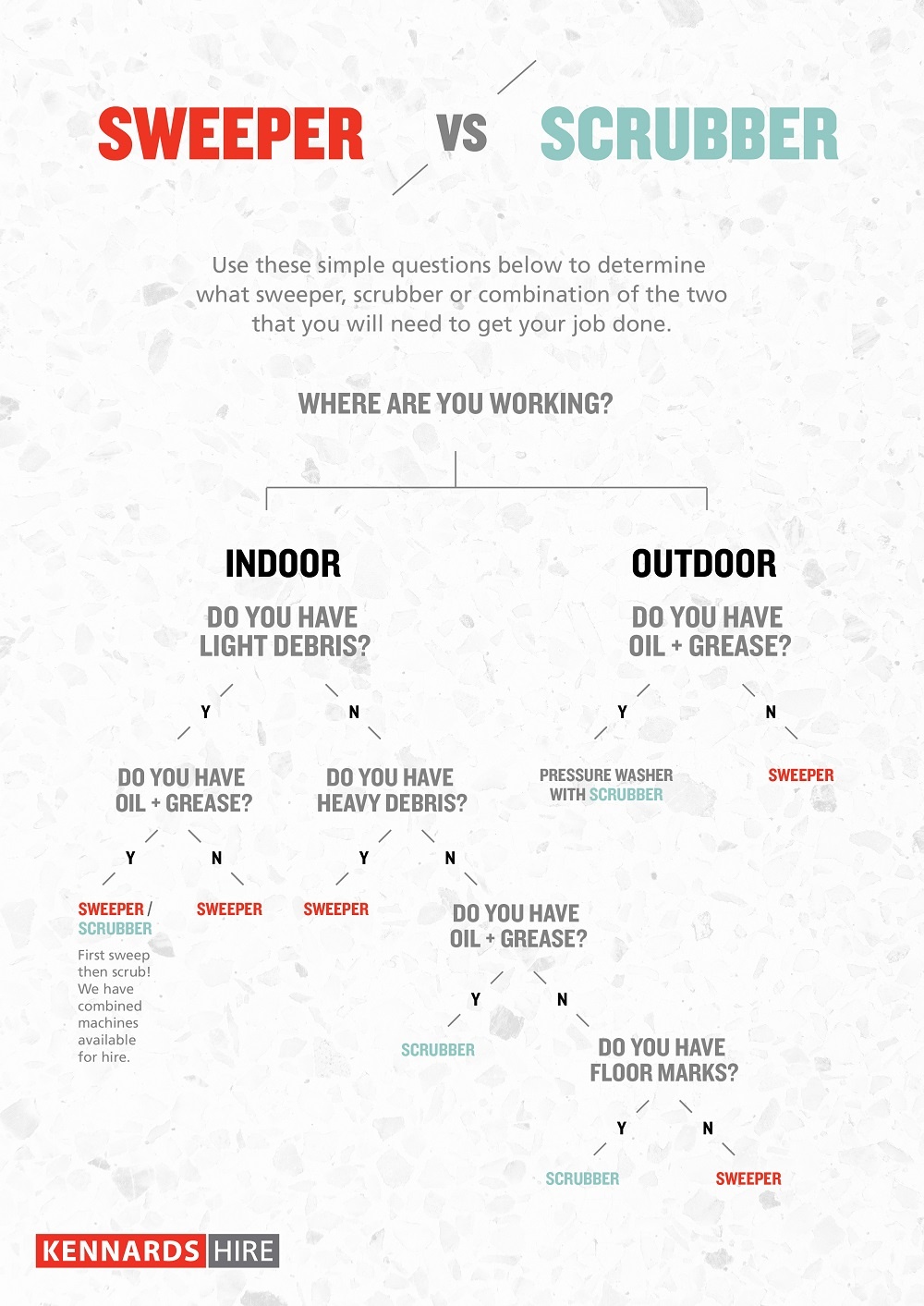A Sweeper or Scrubber: Which One is Right for Your Job?
Get Inspired
Industrial sweepers and scrubbers can make light work of some difficult cleaning jobs, but it’s worth doing some research first on which one is most appropriate for the task at hand.
To put it in domestic terms, if you’d use a broom to clean a surface, you need a sweeper. If you’d use a mop or scrubbing brush, you need a scrubber.
Often, of course, you’ll need to use both. If there is loose surface dirt and rubbish, you’ll need to sweep before you scrub, or the loose dirt will just be spread along the surface. It can scratch the floor, especially polished concrete and tiles, clog the squeegees and brushes, or block the recovery system.
How clean is clean?
First, it’s important to know what you’re trying to achieve. Are you removing litter from a car park after an event or debris from a construction site? Are you cleaning your oil-spattered garage floor before putting your house on the market? Are you trying to remove a build-up of dirt from a bathroom floor? Are you spring cleaning a café or restaurant with grease-splattered floors? Or are you after a shiny scuff-free surface, perhaps in a shopping centre or aged care facility?
Here’s a general guide to which tool is right for particular types of cleaning
How sweepers work
Sweepers use a side broom to move dirt and rubbish into the path of another broom which sweeps it into a chamber. At the same time, a vacuum captures the finer particles so the process is virtually dust-free.
Industrial space sweepers are useful in factories, schools and carparks where they pick up heavier, denser debris.
All about scrubbers
Most scrubbers spray liquid onto the surface. Scrubbing brushes break up the dirt and a squeegee and vacuum combine to suck up the fluid and dirt so the surface is left clean and dry.
You can hire scrubbers with either disc or cylindrical brushes, depending on the floor surface you’re cleaning.
Disc brushes are better for smooth surfaces such as finished concrete or non-contoured vinyl. They follow the floor surface, applying constant downward pressure. You can also use different disc brushes or pads to buff the surface.
For a rough, grouted or contoured surface, such as tiles, terrazzo, studded rubber or vinyl, you’ll need a scrubber that uses cylindrical brushes. Our lightweight floor cleaner/scrubber has easy-to-remove brushes and retractable rollers to suit contoured surfaces.
Note that a scrubber that uses cylindrical brushes won’t apply constant or even contact to a surface, so it can’t be used for buffing.
Walk behind or ride on?
Ride-on units, both sweepers and scrubbers, are ideal for large areas with few obstructions. A ride-on sweeper can clean almost 10,000 square metres in an hour. Our largest ride-on scrubber has a scrub path of more than a metre and can move at 12 km/h.
Walk-behind sweepers and scrubbers are designed for smaller areas with tight corners and obstructions.
Our battery-operated walk-behind scrubbers are suitable for cleaning most hard surfaces including factory floors, car parks and building sites. These very popular machines are self-propelled (up to 5 km/h) and easy to use, capable of cleaning almost 4,000 square metres an hour.
The best of both worlds
For smaller jobs, our compact scrubber sweeps, scrubs and dries in one pass. Lightweight and portable, with a fast charge, it’s particularly suited to cleaning shops, restaurants, cafes, fast food outlets and hotels.
For larger jobs with good access, large ride-on scrubber-sweepers (diesel and LPG) are a flexible option for factory floors, workshops, car parks and building sites. A side brush enables the unit to clean right to the edge. A 110-litre rubbish hopper and 276-litre recovery tank means minimal stoppages. Moving at over 12 km/h, these models can clean more than 8,000 square metres in an hour.
Talk to the experts
So what size sweeper or scrubber do you need? Read our guide here. Then talk to the experienced team at Kennards Hire. We have a complete range of sweepers and scrubbers for your next cleaning job.


